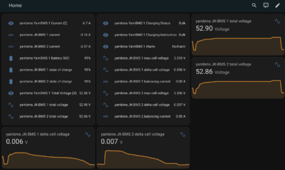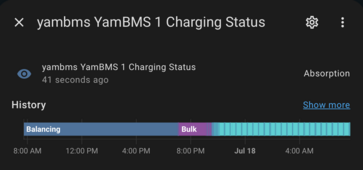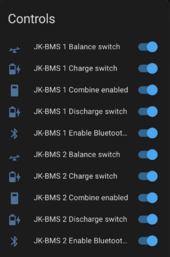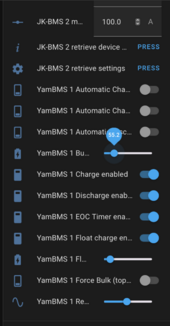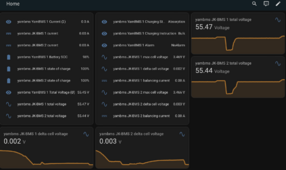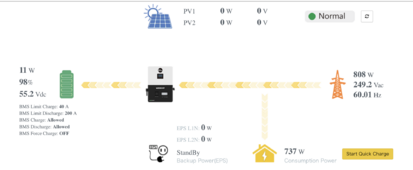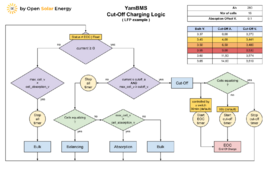@MrPablo do both of these functions need to be enabled to get my packs back in balance and not keep hitting OVP or just one? I rebuilt the batteries and even with 2A active Balancer, after 10 hours still have a delta. I’m only running with Automatic Charge Current enabled at the moment.
YamBMS 1 Automatic Charge Current
YamBMS 1 Automatic Charge Voltage
I know your balance is a lot better now, so this is a little late.
You can use either or both options.
Voltage control will automatically reduce the requested charge voltage (CVL) sent to the inverter when a cell starts to exceed the bulk target.
That way, the runner cell should be maintained at or near bulk (for example, 3.45v) and the balancer can start to bring up the lagging cells.
Controlling the CVL is the preferred option according to Victron and others, but it depends on how well your inverter behaves.
My Solis inverter is not great at CVL control, so it doesn't work well for me.
You can compare voltage control to cruise control in a car.
Current control will automatically reduce the requested charge current (CCL) sent to the inverter when a cell starts to exceed the bulk target.
This should prevent the runner cell from exceeding the max voltage cutoff, but doesn't maintain it at bulk voltage - instead it should keep it just below max cell voltage.
Current control should work with any inverter that uses CAN control.
You can compare current control to a max speed limiter in a car.
Using both together is like setting the cruise control to 70mph, with a max speed limit of 80mph.
If cruise control (CVL) works correctly with the inverter, the limiter (CCL) will not really kick in.



